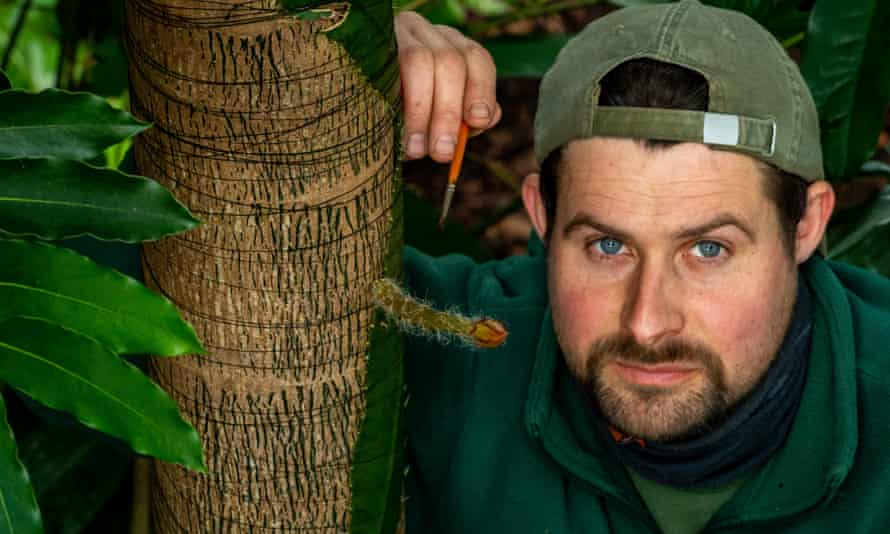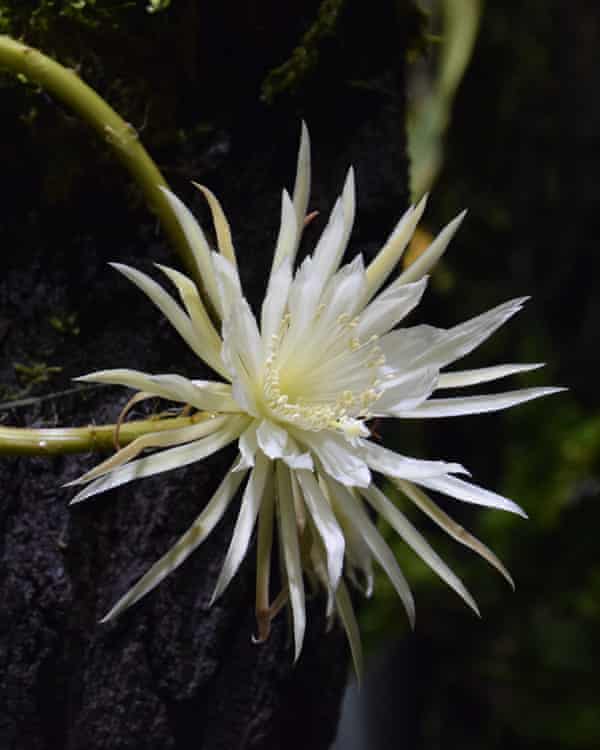Extract from The Guardian
Experts in Cambridge are on night vigil as the moonflower is about to blossom in a UK first, an event being livestreamed for all

Last modified on Tue 16 Feb 2021 05.39 AEDT
Cambridge botanists are eagerly waiting for a rare and unusual cactus called the moonflower to bloom for what is thought to be the first time in the UK, an event that begins at sunset and is over by the time the sun rises the following day.
Experts at Cambridge University’s Botanic Garden (CUBG) have been on night watch for several days, even setting up a live stream so the public can get a glimpse of the flowering of the Amazonian plant Selenicereus wittii.
The nocturnal flower is expected to bloom at about 9pm in the next few days. The large white flower will produce a beautiful sweet-smelling fragrance, but just a few hours later, this smell morphs into something “rancid” as the plant starts to die. The whole thing is over in 12 hours.
“It’s an incredibly special moment,” said glasshouse supervisor Alex Summers, who has been nurturing the moonflower since 2015 after obtaining a cutting from Bonn Botanic Gardens, Germany. “We want to share this moment with as many people as we can – these things are truly amazing.”
The cactus flower can be up to 27cm long, and is pollinated only by two species of hawkmoth (Cocytius cruentus and Amphimoena walkeri) which have a sufficiently long proboscis (tongue), although this event has never been observed in the wild. There are no hawkmoths in the greenhouse so botanists will pollinate the flower using a paintbrush.
The moonflower comes from inaccessible, waterlogged parts of the igapó forests in western Brazil, far from the arid environments normally associated with cacti. It is found in rainforest periodically flooded by acidic and nutrient-poor blackwater rivers.
The flower spirals around the trunks of other trees, clinging on with leaf-like pads to ensure it is high enough to avoid seasonal flooding. Its seeds float, and are designed to drop into the water and be dispersed away from the parent plant. “We have this idea that we’ve explored the planet, and we really haven’t. This cactus throws a light on the incredible diversity out there, and how little of it we even understand,” said Summers.

The Cambridge university specimen has spiralled around the trunk of a water chestnut tree and the flower is 3.6m (12ft) high. In November, Summers spotted a bud the size of a pea and knew this meant it would bloom for the first time. For nearly a week, botanists have been expecting the flower to open, but it keeps growing. It is now 23cm in length, 3cm longer than the parent moonflower in Bonn when it blooms. In the wild the moonflower blooms when it is 25–27cm long.
“It’s already bigger than we were told, so that’s really positive because we should get a really good flower out of it,” said Summers. “We are used to patience – I’m used to waiting five, eight years before anything happens. We have this culture of expecting everything to happen instantly but plants are very much not like that.”
Visitors cannot see the flower because the glasshouses are closed but the live stream will run until the flower opens. This plant is believed to be the only specimen in the UK, and worldwide it is listed in only 13 botanic gardens.
Botanists are hoping it will continue to flower annually. If it produces seeds, Summers says CUBG will share them with other botanic gardens, or they will be able to take a cutting from their moonflower cactus when it is bigger. “Once it’s large enough we’re happy to share material for the purpose of research, conservation and education – that’s the point of being a botanic garden,” he said.
Find more age of extinction coverage here, and follow biodiversity reporters Phoebe Weston and Patrick Greenfield on Twitter for all the latest news and features

No comments:
Post a Comment